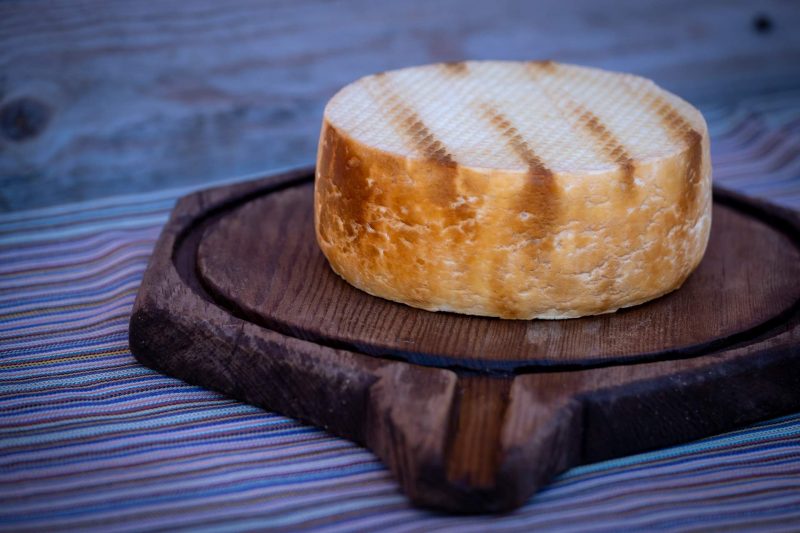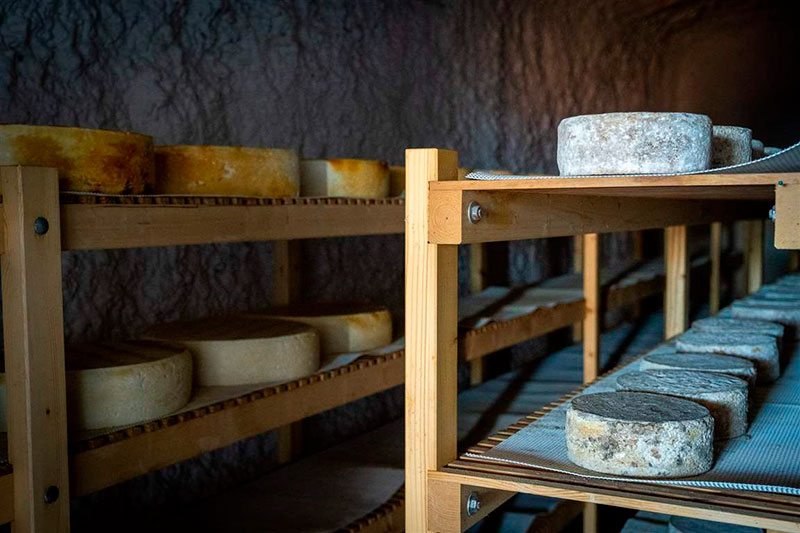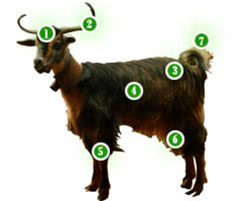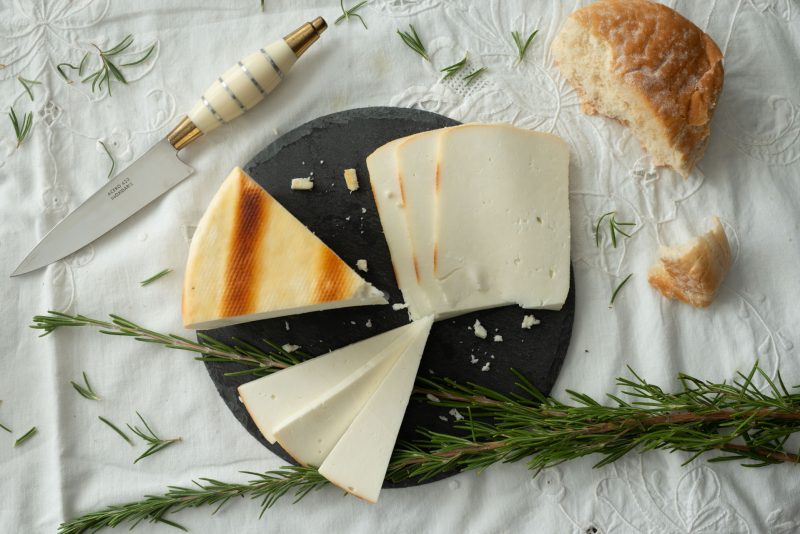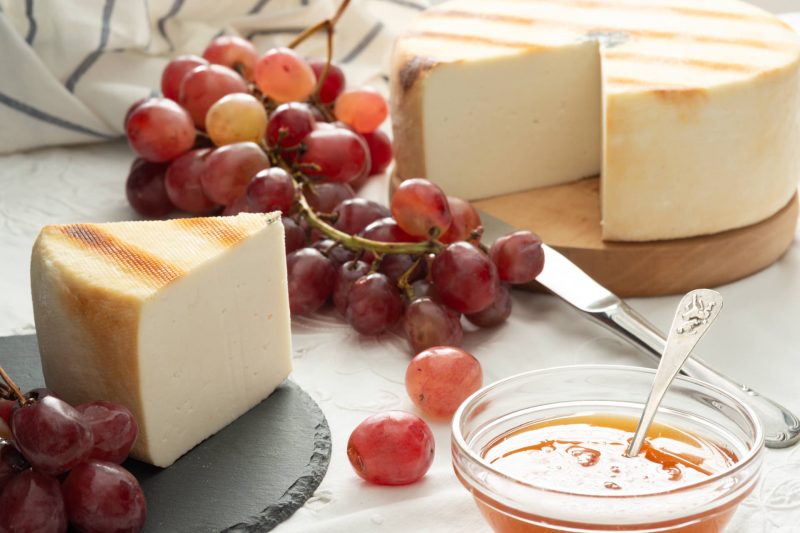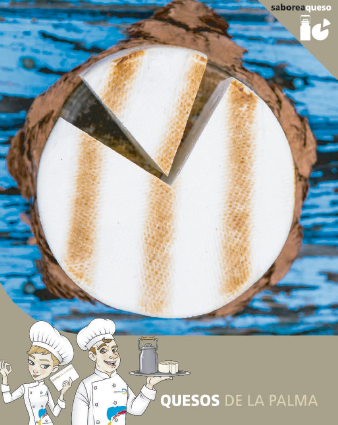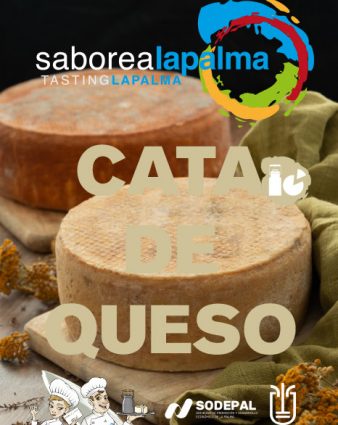THE TRACES OF AUTHENTICITY
The production process of 'Queso Palmero', which is completely artisan, prevents absolute uniformity between the products of the different producers. Despite this, the Regulatory Council's certification back labels guarantee compliance with a series of minimum requirements:
EXTERNAL APPEARANCE: Cylindrical shape, with flat faces. The height and diameter must be in certain proportions. In other words, cheeses that are too flat or tubular in shape are not allowed. A genuine Queso Palmero must be between 6 and 15 centimetres high and between 12 and 60 centimetres in diameter.
CORTEZA: The artisan processes of filtering and pressing leave their mark on the outside of Queso Palmero. The darker horizontal bands, characteristic of some cheeses, appear during smoking. The identification of the producer, in the form of a stamp engraved on the upper part of the rind.
TEXTURE: The texture should be of medium firmness, elasticity and solubility.
CUT APPEARANCE: The cut is compact, although small, irregular eyes may appear.
MATURATION: Queso Palmero' is marketed as both fresh (from 8 to 20 days), semi-cured (from 21 to 60 days) and cured (from 60 days). It is important to stress that the small margin between production and marketing of the fresh cheese prevents it from being certified by the Regulatory Council. Fresh cheese therefore does not carry a back label.
TYPES: There are two varieties of Queso Palmero. The artisan cheese weighs less than 8 kilos, while the herd cheese is always above this figure and is made from pastured goats. In addition to their volume, it is easy to distinguish them by their label (green for the herd cheese and burgundy for the artisan cheese).
COLOUR The rind is white in non-smoked cheeses, although it acquires ochre tones as it matures. The paste is white and shiny, but becomes more ivory-coloured and matt as it matures.
SMELL AND TASTEThe aroma of goat's milk is immediately recognisable. It is also common to find hints of pasture, hay, mushrooms or nuts. The smoked notes also reveal the presence of the natural materials used in the process: almond shells, Canary Island pine needles or dried prickly pear fibre. A slight acidity and salty and sweet notes are detected at the end of the tasting.


